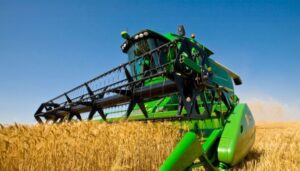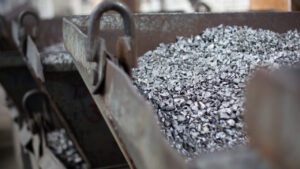
The oil market opened the week with a decrease amid tightening quarantine restrictions in China, which increased the pessimism of traders regarding the prospects for demand for fuel.
Market participants are also evaluating the potential consequences of introducing a cap on Russian oil prices. On Friday, it became known that the G7 countries intend to set a price ceiling for oil from the Russian Federation from December 5, for oil products – from February 5.
November Brent futures on London’s ICE Futures are trading at $91.45 per barrel by 8:15 a.m. on Monday, $1.39 (1.5%) lower than the closing price of the previous session. As a result of trading on Friday, these contracts rose by $3.69 (4.1%) to $92.84 per barrel.
The price of futures for WTI oil for October in the electronic trading of the New York Mercantile Exchange (NYMEX) is $85.3 per barrel by this time, which is $1.49 (1.72%) lower than the final value of the previous session. By the close of the market on Friday, the value of these contracts increased by $3.25 (3.9%) to $86.79 per barrel.
As a result of the past week, the cost of Brent fell by 0.2%, WTI – by 0.1%.
“It seems that expectations of weakening oil demand are coming to the fore, given the fears of a recession in the world and a delay in quarantine restrictions in China,” said oil and gas analyst RHB Investment Bank Bhd. Sean Lim, quoted by Bloomberg.
The lockdown is currently in effect in Chengdu, home to 21 million people, as well as parts of Guiyang City and at least one university campus in Beijing.
The US Treasury Department’s Office of Foreign Assets Control (OFAC) on Friday issued recommendations to insurance and financial companies regarding the implementation of the price cap initiative for Russian oil. In particular, these companies will need to obtain evidence that oil was purchased at a price below a certain level before insuring tankers.
Structure of import of services in 2021 (graphically)

SSC of Ukraine

2,740 farmers from Ukraine have already applied for participation in the program financed by the budgetary support of the European Union through the State Agrarian Register (SAR), according to the website of the Ministry of Agrarian Policy and Food on Friday.
Farmers with a land bank of 1 to 120 hectares (with payment of up to 3.1 thousand UAH/ha), and owners of 3 to 100 cows (with payment of up to 5, 3 thousand UAH/head).
According to the Ministry of Agrarian Policy, a total of 2,299 applications were submitted for payments in the first direction, and 437 in the second.
The agency recalled that the acceptance of applications for assistance in the two above areas will last until November 15, 2022.
At the same time, only agricultural producers registered in the GAR and meeting its criteria can be participants in the program. Currently, 11,000 users have already registered with the GAR, who can access information about existing state support programs in real time and apply for it online.
As reported, GAR is an automated electronic system available to all agricultural producers, regardless of the form of management. With the help of the registry, it is planned to provide public services, simplify access to bank financing and loan guarantee programs, as well as introduce targeted government support programs and evaluate their effectiveness.
The project is being implemented in coordination with the State Geocadastre, the Ministry of Justice and with the assistance of the World Bank and EU project “Support for transparent land management in Ukraine”, as well as the USAID Agricultural and Rural Development Program.
In the last three years, the EU has been supporting the introduction of GAR in Ukraine. With technical and financial assistance from the EU, the government has developed the software and carried out two pilot implementations ahead of a nationwide launch in August 2022.

The books were handed over to the warehouses of corporate enterprises JSC “Ukrvydavpoligrafia” JSC. From there, publications are sent to cities in Ukraine and Europe.
During this hour, almost 320,000 books were already handed over to volunteer centers in Ukrainian cities and European countries where refugees currently live. Delivery of literature is carried out by trucks of volunteers and volunteer organizations.
The largest number of books was transferred to the Lviv region — more than 25,000. Also, over 125,000 books were sent to Kropyvnytskyi, Ternopil, Drohobych, Chernivtsi, Kamianets-Podilskyi, Ivano-Frankivsk, Uzhgorod, Khmelnytskyi.
In addition, more than 190,000 copies of literature were sent abroad, namely: 45,000 books to Poland, almost 28,000 to Austria, more than 1,000 to Romania, 76,000 to Slovakia, 4,000 to the Czech Republic, more than 1,000 – to Hungary, 2 thousand – to Albania, about 2 thousand – to Croatia, more than 2 thousand – to Switzerland, 2 thousand – to the Netherlands, almost 5 thousand – to Germany, almost 8 thousand – to Great Britain.
Another 18,000 copies of the books are now on their way to Slovakia and Austria.
The campaign was launched on March 15 by the State Committee for Television and Radio Broadcasting of Ukraine together with the Office of the President of Ukraine and the Ministry of Culture and Information Policy.
The purpose of the campaign is to provide children who were forced to relocate to escape Russian armed aggression with textbooks, study aids, and fiction free of charge.
We will remind you that 100,000 copies of literature were sent to different European countries during this campaign.
As you know, the books were delivered to Poland, Lithuania, Great Britain and other countries as part of the “Books without Borders” project for children from Ukraine who were forced to leave for other countries.

Technically, it will take up to two weeks for airports to reopen in Ukraine, but in practice this can be done only with guaranteed security, Infrastructure Minister Oleksandr Kubrakov said.
“We consider Lviv airport as the first airport. I hope that, as it was with the Black Sea Grain Initiative, when we receive guaranteed security, guarantees, first of all, from international partners, from the UN, we will start, I hope,” he said on 17th annual meeting of the Yalta European Strategy (YES) held by the Victor Pinchuk Foundation at the end of this week in Kyiv.
Answering questions, Kubrakov stressed that the main obstacle to the resumption of flights of civil ships is safety, not technical issues.
As reported, the Ukrainian sky has been closed for flights of civil aircraft since the first day of the full-scale military aggression of the Russian Federation – from February 24 of this year.
At the end of July, the Transcarpathian Regional Council decided to allocate 26 million UAH to the Uzhgorod airport, and the head of the regional council Volodymyr Chubirko expressed confidence that it would be possible to launch it “in a month or two.” According to him, the advantage of the Uzhgorod airport is that the threshold of the runway is located a few hundred meters from the Ukrainian-Slovak border and Slovak airspace is used for instrument landings at this airfield.
However, a few days later, the Head of the Transcarpathian Regional State Administration, Viktor Mikita, refuted the statements of the Transcarpathian Regional Council regarding plans for the early resumption of the work of the Uzhgorod airport. “… Now statements about the resumption of the airport’s work are nothing more than wishes and intentions,” Mikita stressed.

Ferroalloy enterprises of Ukraine in January-July of the current year in total reduced output by 27.6% compared to the same period last year – up to 360.17 thousand tons.
As Interfax-Ukraine was informed by the Ukrainian Association of Ferroalloy Producers (UkrFA), in January-July, the production of silicomanganese decreased by 17.5% – to 319.66 thousand tons, ferromanganese – by 67.6% – to 19.98 thousand tons.
In addition, the production of ferrosilicon (in terms of 45%) decreased by 60.5% – to 18.11 thousand tons, metallic manganese by 55.6% – to 1.81 thousand tons.
Also, 0.61 thousand tons of other ferroalloys were produced.
Pokrovsky (previously – Ordzhonikidzevsky) and Marganets mining and processing plants (PGOK and MGOK, both – Dnepropetrovsk region), mining and enriching manganese ore, for 7 months-2022 produced a total of 777.52 thousand tons of manganese concentrate, which is 19. 8% lower compared to 7M-2021. At the same time, MGOK produced 294.68 thousand tons of concentrate (a decrease of 5.6%), PGOK – 482.84 thousand tons (a decrease of 26.5%).
Pokrovsky GOK for 7 months. also produced 29.55 thousand tons of iron ore sinter (82.7% less compared to January-July 2021), supplying it to PJSC “Dneprovsky Metallurgical Plant” (DMZ), which is part of DCH Steel businessman Alexander Yaroslavsky. In March-July, PGOK did not produce iron ore sinter, as DMZ suspended the production of metal products.
At the same time, PGOK resumed the work of the Bogdanovskaya concentrating and sintering plant on September 1 this year.
As reported, in 2021 Ukraine increased the production of ferroalloys by 15% compared to 2020 – up to 858.7 thousand tons, but reduced manganese concentrate by 6.6%, to 1 million 763.43 thousand tons.
Prior to nationalization, PrivatBank (Kyiv) organized the business of SZF (located on the NKT) and ZZF, MGOK and PGOK (OGOK).
The Nikopol Ferroalloy Plant is controlled by the EastOne group, created in the fall of 2007 as a result of the restructuring of the Interpipe group, as well as the Privat group (both Dnepr).